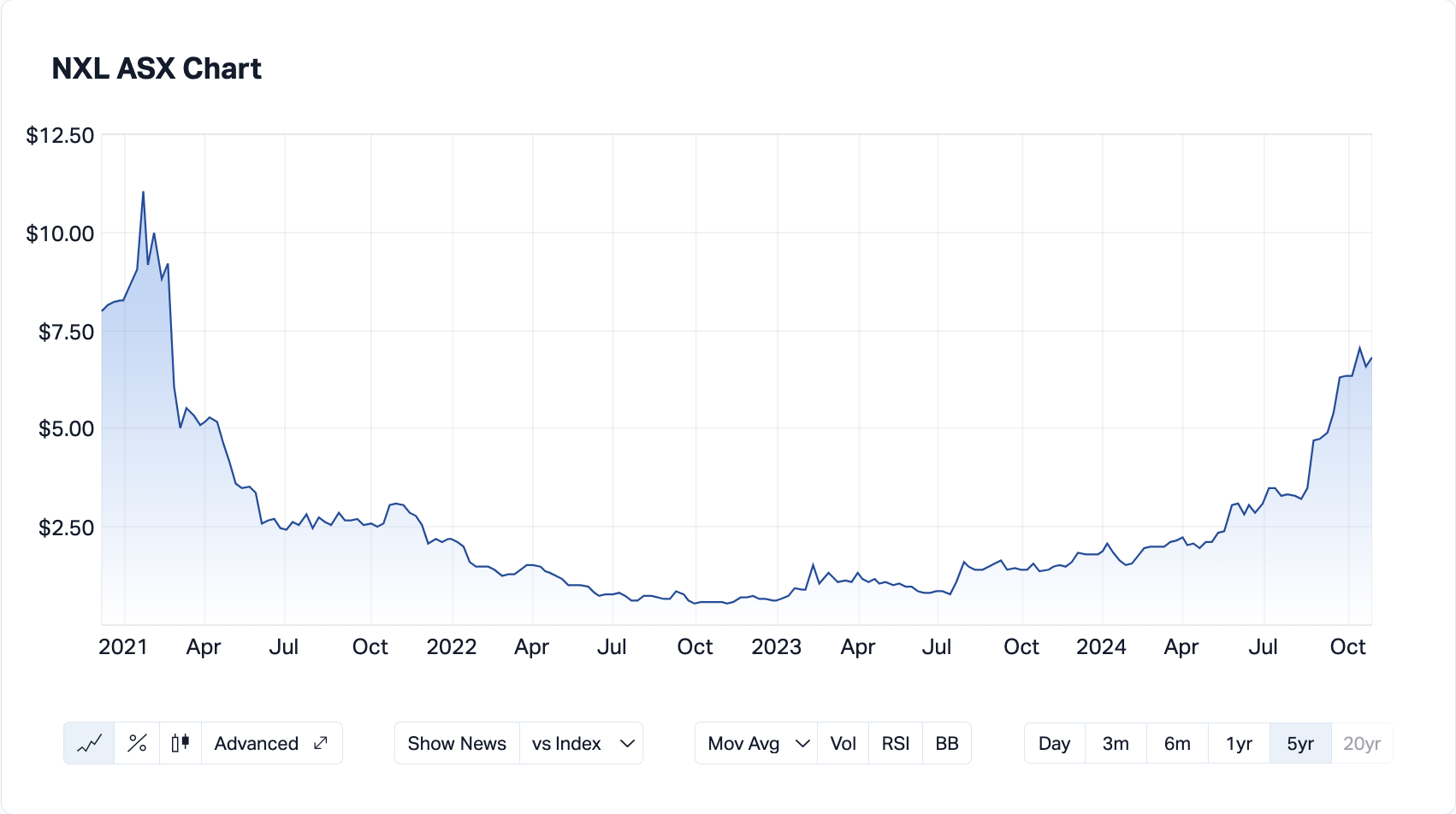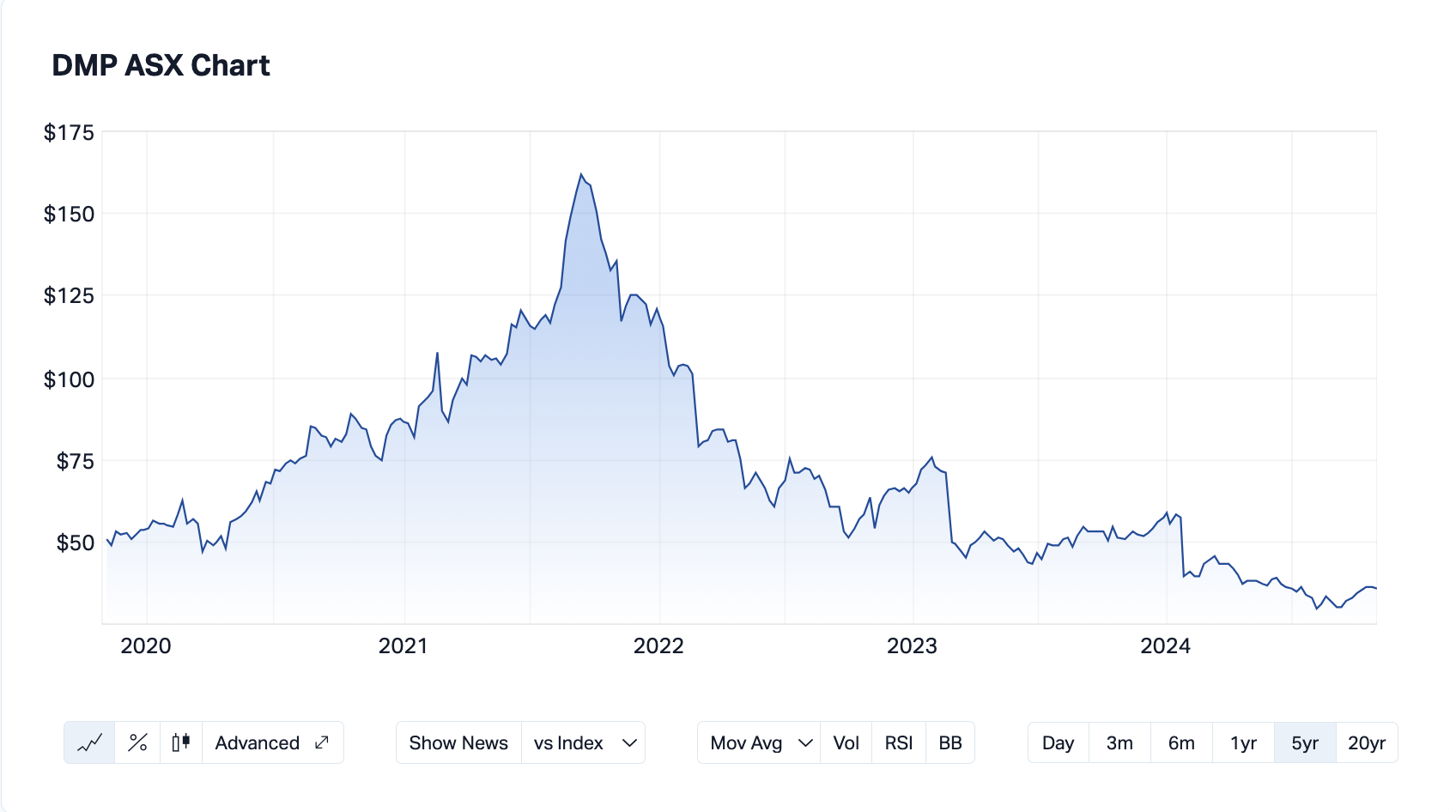4 misunderstood growth stocks that can keep this Golden Bull running
GQG Partners, Nuix Limited, HUB24 Ltd, and ResMed are four stocks that helped power 32.5% returns over the 12 months to September 30 for Sydney-based growth investor ECP Asset Management.
These strong numbers saw ECP’s Growth Companies Fund awarded the Golden Bull Award for the best large-cap Australian Equity Manager at the 2024 Australian Fund Manager Foundation Awards. Shaw & Partners generously sponsored the award in 2024, and money raised on the evening went towards The Sydney Children’s Hospital Foundation and Odyssey House.
The Golden Bull is a true battle of the heavyweights. Since the awards started in 1999, some of the leading active managers have taken out the prize. This year was no different, with ECP getting the chocolates ahead of formidable competition from Perpetual, Platypus Asset Management, and First Sentier.
There’s a saying that lightning never strikes twice in the same place, but you could argue that rule doesn’t apply to active managers. Manny Pohl founded ECP Asset Management in 2012. The firm’s flagship growth strategy has delivered 13.07% p.a. since inception, which is 3% ahead of the ASX 300 Accumulation Index.
Pohl has form when it comes to founding successful growth managers, having been one of the co-founders of Hyperion Asset Management, which recently topped Mercer’s equities survey for one-year returns. ECP Asset Management has grown from a standing start in 2012 to managing over $3 billion, primarily for institutional clients.
The bounce back in form for growth investors will undoubtedly be a welcome relief for long-term holders who endured a torrid time in 2022. The question for managers like ECP is how they can keep the bull running.
In this Rapid Fire Q&A, Jared Pohl, Portfolio Manager of the ECP Growth Companies Fund, discusses how the portfolio has changed compared to 12 months ago, the impact of multiple expansion on returns, and a selection of stocks that he believes the market misunderstands.

What have been your major portfolio changes over the past 12 months?
The best way to think about portfolio composition is in two parts, position sizing and name turnover. These two particular things drive changes in the composition of the portfolio but for different reasons.
We are very focused on finding high-quality growth companies. The way we define growth is primarily about where the companies are in their lifecycle. Secondarily, we look for the accounting-based measures of growth to come through (sales growth, margin expansion, return on invested capital, etc). Companies that have long-term structural growth drivers and large runways ahead of them are the companies we tend to focus our attention on more than those that don't. Investing in these kinds of companies means that we need to hold positions in them for longer periods of time so that their strategies can come to fruition. Our name turnover is reasonably low.
This year, we added Guzman y Gomez (ASX: GYG) and Chrysos (ASX: C79) to the portfolio. We had followed GYG for several years, so knew the company well when it came to market. Chrysos is a smaller company with a unique technology asset that we think can become the gold standard (excuse the pun) for gold assay technology used in mining.
Position sizing, or relative weights in the portfolio, changes much more frequently in response to market movements. The key determinant of this is the expected return on each of the positions, adjusted for relative risks. Because our estimates of business value don't change nearly as much as day-to-day share prices, this leads us to continuously recycle capital away from lower expected returns in the portfolio to the higher ones. While not excessively high, position sizing drives the majority of the portfolio composition change in the portfolio.
Over the last twelve months, our exposure to names such as GQG Partners, ResMed, HUB24 and Netwealth has reduced on the back of positive share price momentum. This capital was reallocated towards the likes of SEEK (ASX: SEK), James Hardie Industries (ASX: JHX), IDP Education (ASX: IEL) and Block Inc (ASX: SQ2), where our expected returns are much higher.
We’ve seen investors with a growth bias swing back from a difficult year in 2022, how much of this move is driven by rate expectations versus company fundamentals?
If you decompose cumulative returns between earnings growth, income and changes to price earnings multiples, the primary driver for our portfolio for the tough year in 2022 was a sustained deflation of multiples driven primarily by increasing rates.
The same analysis over the long term suggests that the overwhelming majority of the return has been driven by fundamentals as opposed to multiple expansion. There has been a small amount of cumulative performance due to multiple expansion, but it is marginal.
Ultimately, the multiple that is placed on earnings is subject to so many influences that it's very difficult to work out how much is priced in with respect to rate expectations.
For this reason, we focus our time and attention on where we believe we have an edge, and that is finding and allocating capital to the companies who have demonstrated their ability to continue to grow, regardless of what the macroeconomic picture looks like, and if we face a head or tailwind based on the macro picture, hopefully we’ve minimised the impact of this through our position sizing!
You talk about finding companies where issues are not understood by the market. What is an example of where this has played out and an example of one you see in the market today?
Probably the best recent example of this was Nuix (ASX: NXL). There were a number of factors that caused the share price to decline to circa 60 cents per share. Despite the negative price impact we maintained conviction in our thesis having done a significant amount of work to get comfort on the things that caused the market to be dismissive of the name.

Broadly the issues that needed to be understood were firstly, the types of contracts that were sold and how the revenue was recognised, particularly in the face of a shift away from multi-year deals to consumption contracts. Secondly, the basis for the application made by the former CEO, Eddie Sheehy, with respect to options that were issued to him in 2019.
It took a while for these issues to be worked through, the shift away from multi-year deals to consumption revenue took some time to work through the book, and the litigation took a couple of years to work its way through the legal system.
Essentially, we formed a view that the options Sheehy was given in the 2019 settlement were not exercisable, and even if there were structural issues with his legal case - there are foundational legal principles that meant that a lot of these issues should have been ventilated at the prior case and sorted out then as opposed to being litigated now. Sheehy lost the case and lost on appeal.
I don't see any specific cases like that in our portfolio today, despite us having divergent views to consensus on a number of stocks, but perhaps next time we chat I’ll be able to point you in the direction of one.
Consumer discretionary is a big overweight in the portfolio yet consumers appear to be facing sustained pressure under higher rates. Why are you still bullish on the sector?
Rather than adopting a top-down approach to sector allocation, our sector exposures are a product of the companies we select and the amount of capital we allocate to them. In a way we’re neutral towards the sector, however, hold a very positive outlook on the individual companies within it that we have allocated capital to.
The companies that form part of our overweight consumer discretionary exposure include companies like Lovisa, Guzman Y Gomez and IDP Education. While each of these companies has very different end markets, they’re similar in the fact that our investment thesis is predicated on market share gains.
GuzmAn y Gomez (ASX: GYG)
In the QSR space, Guzman Y Gomez’s offering of fresh, healthy food options continues to be received well by consumers and investors. Our industry discussions point to significant opportunities in breakfast and late-night trading, which should help their Same Store Sales Numbers. The longer-term picture is driven by a continued store rollout. The company is nowhere near saturation in the Australian market, and then it has optionality in Asia and the United States as well.
Lovisa (ASX: LOV)
In fast fashion retailing, Lovisa offers another interesting example and one where our long-term focus provides a different view to that of the market. Lovisa sold off on the release of its FY24 results, due to concerns the market harbours about 'slowing growth'. While softer, the longer-term store rollout opportunity is still very much intact in our view, as despite significant growth in the year before, the company reported strong sales, store network growth, gross margin improvements and NPAT growth.
IDP Education (ASX: IEL)
IDP Education is building a global student placement platform that is the largest and best place for students to find a place to study internationally, benefiting from the rising wealth in Asia. IDP’s IELTS business is a necessity for students and contributes to IDP being the most trusted brand name in education.
The company has a significant runway to reach a 15% market share in its most mature markets despite already being the market leader in what is a fragmented market. Despite an uncertain political environment impacting the industry, IDP was able to grow volumes 17% over FY24 while industry volumes contracted -13%, which speaks to the quality of the business.
IDP education has a large short position currently 14% - what do you see that the shorters are missing?
Currently, the industry is facing pressure as governments tighten immigration standards in response to post-covid inflation and population growth. Importantly this industry weakness is supply-driven - demand is still healthy. Industry feedback has been unanimous that this is a cyclical short-term impact, and post-election cycles and tightening industry stability will re-emerge as has been seen in the UK.
Recently, Indian/Canadian diplomatic relations have flared up again presenting a material risk to IDP, driving the share price lower. Bilateral trade between the two countries is around $8 billion, reducing the risk of an all-out trade war, which we still believe is a long-tail risk.
While a deterioration in the ability for Indian students to study in Canada would impact IDP earnings in the short-term, its business model is now resilient enough to be able to re-route the demand to other destinations in the medium term. Owning the student relationship is key to IDP's ongoing success.
IDP is well placed to accelerate market share gains as students increasingly demand higher quality services and higher visa acceptance rates. This will reduce earnings impact from current market turmoil, and accelerate earnings growth once the industry stabilises.
Given IDP's value proposition in a cyclically weak market and depressed share price, it has one of the highest internal rates of return in the portfolio.
DMP is a former darling that has disappointed investors. Can you talk me through your thesis on DMP?
Dominos (ASX: DMP) is arguably in the best position it's been for quite some time to outperform from here. To my mind, the primary cause of the underlying underperformance has been in part declining payback periods for the underlying franchisees.
This compression in their returns was driven by increasing input costs and a reduction in the demand that was pulled forward during the pandemic. In addition to that, the company made some missteps, primarily in Japan, and over-extended itself in a market that wasn’t ready to absorb that level of presence in a normal environment.
More recently the performance has been pronounced by poor trading conditions in France and Japan. Despite ANZ performing well, and some positive signs from Germany, and the Benelux regions, the sizeable earnings mix skewed toward the Japanese market weighed heavily on the company. The company is taking the required steps to improve the unit economics for the franchisees. For example, they are improving the customer value proposition and increasing sales per store metrics by shutting down underperforming stores.
DMP is a high-quality franchise that has fallen on some tough times recently. However, there still is an opportunity for the company to continue to expand its economic footprint, and at these levels, it's definitely an asymmetric bet.

Can you tell me about your process for selling stocks? How do you know when it is time to exit a winning or losing position?
We exit a position from our portfolio primarily for two reasons: valuation and thesis breakdown.
When a company's internal rate of return (IRR) falls below our minimum threshold, we sell the position down to zero. If the IRR becomes attractive again without requiring additional work and the thesis remains intact, we will reinstate the position.
On the other hand, if our thesis for a company breaks down, we exit the position. Various factors can cause a thesis to break. If we decide to re-establish a position after a thesis breakdown, we must redo the work to redefine the thesis.

6 stocks mentioned


